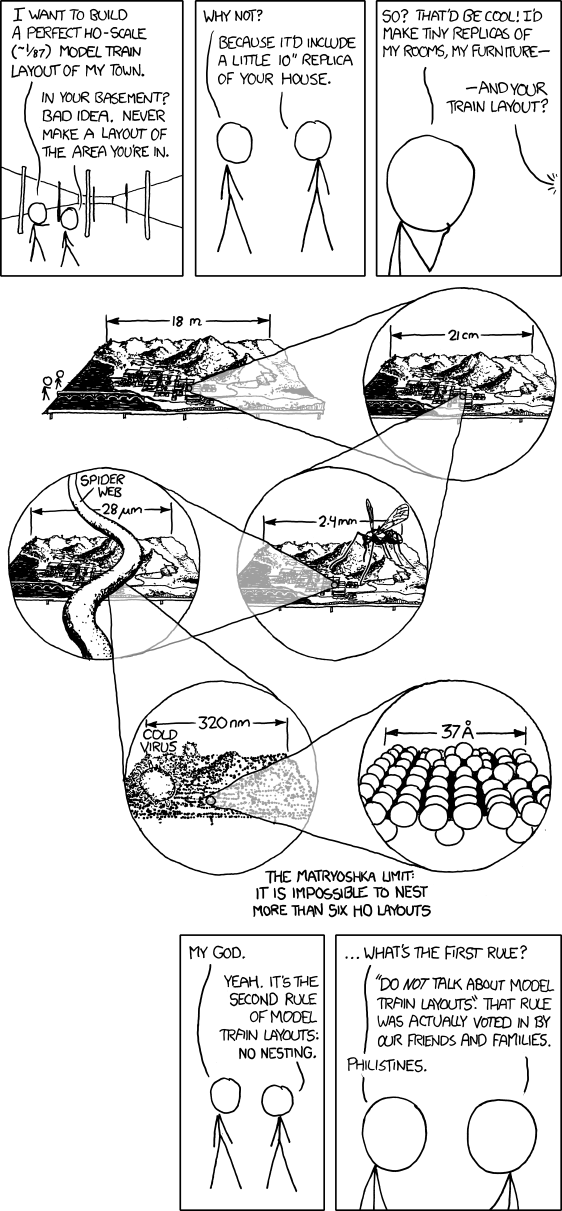So, remember some time ago when I mentioned I was building a model railway with my Dad? Well, I recently took some more photos and thought the time was right to show you all what we've done so far! Sorry if they're a bit blurry: they were taken using the magic of iPhone.
Here's the shed area and "little station" as it's informally known.
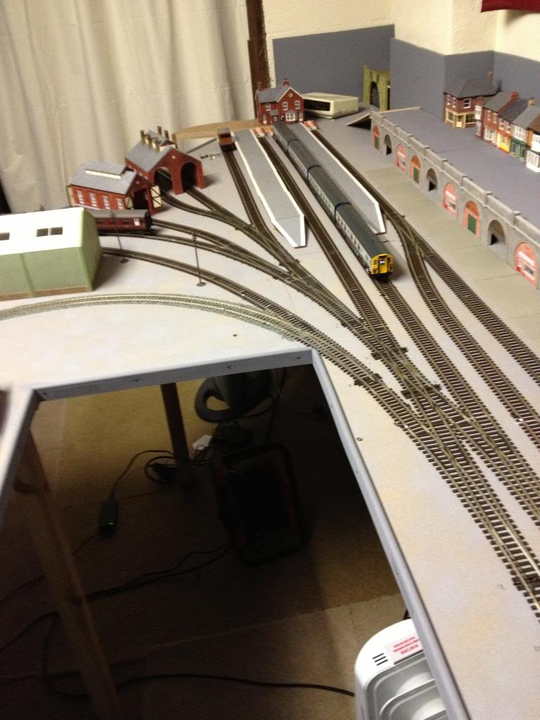
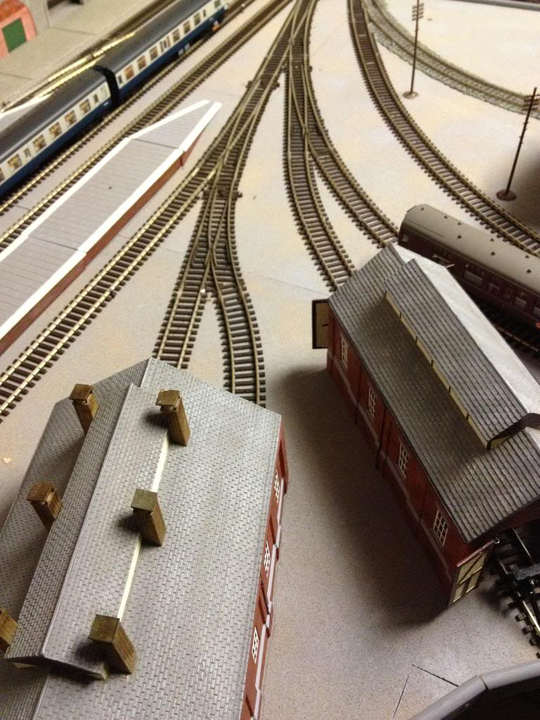
Here's the station halt (we're going to put some sort of platform near the wagons)

Some shots of the goods yard.





Our humble bus depot.

Some shots of the main station, with our T9 locomotive and Patriot class locomotive.

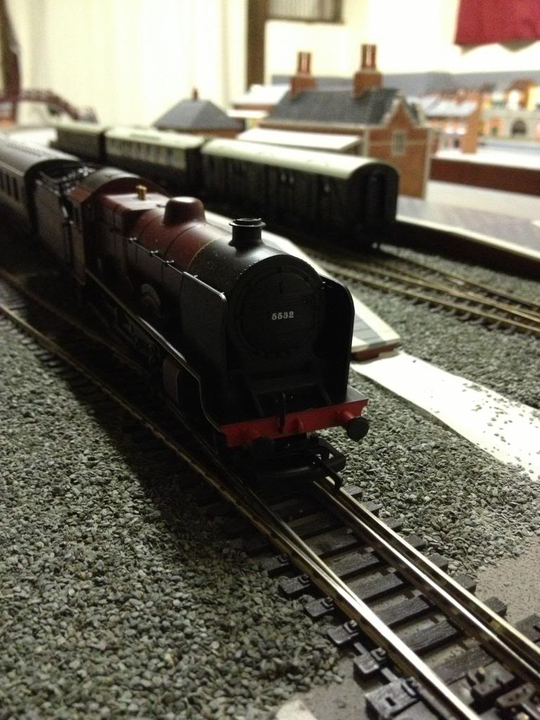
This is a Pullman coach with light-up table lamps. There's an electrical current running through the track: the metal wheels of the coach conduct it and light the lamps. They're quite lovely.

Our town and viaduct.

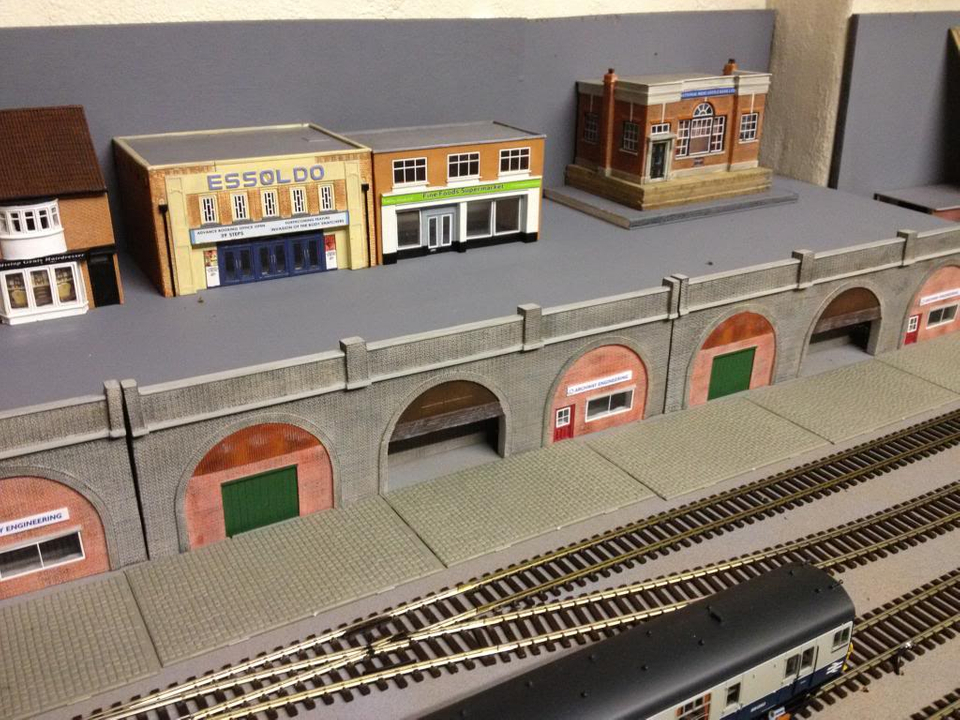
And finally, for AJ:

The Thomas ones are always ridiculously popular...
A bit of background information...we started this around April/May last year. It's set roughly in the late 20th Century but we're not really trying to be too historically accurate. It's operationally fun and that's what we want at this stage!
The main issues with a model railway, I think, are space, money and time. We're modelling in OO gauge which necessitates a pretty big area to do anything decent, and model railways as a rule are expensive. Locomotives vary in price but paying £100 for a locomotive isn't unusual. We generally get them a bit cheaper than that however.
Anyway, in terms of what we've actually done:
-Buy wood for the baseboard, cut it to shape and screw it into position. The board is supported by several strategically place legs and there's a sort of shelf along the far edges for it to rest on.
-Cover the baseboard in cork to aid smooth running.
-Plan the track. This took so long you cannot even imagine.
-Nail the track down. So many pins...
-Start ballasting the track. This involves scattering gravel between the sleepers and gluing it into position. You can buy stuff like foam underlay but this looks the most realistic. However, once you've glued it into position it makes lifting the track pretty difficult so you have to think long and hard before doing this.
That's everything we've done that's permanent...you've probably noticed the buildings on the layout. Most are out-the-box ones made of resin, but a couple are made of card and they're quite fun to make. And cheap, too, which is a bonus to say the least. In any case they're not glued down or fixed into position. The plan is to do so and put little LEDs in the windows!
We run a mix of different trains. We have some very recent diesel models (chronologically speaking) but also some stuff from the mid-20th century and even earlier. That green locomotive was built around the 1930s, I think. I have all the Thomas ones except for Gordon which will hopefully be a birthday present! It's not really a big thing, though: I'll get them but I'll happily have normal model railway stuff.
It's controlled by a fancy-shmancy system called DCC (or Digital Command Control). Essentially each locomotive is fitted with a little computer chip and this allows accurate control of them.
What are we doing next? Well, we're going to finish this ballasting, and then we'll be putting down the road. Then we'll most likely be laying the grass and doing some minor landscaping to make it a little more interesting. It's a big, time consuming job and we don't get as much time to work on it as we'd like. But it's a fun project and satisfying when everything works, which as a rule it does.
I hope this was a nice insight into a hobby that's quite dear to my heart. Watch this space for more progress.
Here's the shed area and "little station" as it's informally known.


Here's the station halt (we're going to put some sort of platform near the wagons)

Some shots of the goods yard.





Our humble bus depot.

Some shots of the main station, with our T9 locomotive and Patriot class locomotive.


This is a Pullman coach with light-up table lamps. There's an electrical current running through the track: the metal wheels of the coach conduct it and light the lamps. They're quite lovely.

Our town and viaduct.


And finally, for AJ:

The Thomas ones are always ridiculously popular...
A bit of background information...we started this around April/May last year. It's set roughly in the late 20th Century but we're not really trying to be too historically accurate. It's operationally fun and that's what we want at this stage!
The main issues with a model railway, I think, are space, money and time. We're modelling in OO gauge which necessitates a pretty big area to do anything decent, and model railways as a rule are expensive. Locomotives vary in price but paying £100 for a locomotive isn't unusual. We generally get them a bit cheaper than that however.
Anyway, in terms of what we've actually done:
-Buy wood for the baseboard, cut it to shape and screw it into position. The board is supported by several strategically place legs and there's a sort of shelf along the far edges for it to rest on.
-Cover the baseboard in cork to aid smooth running.
-Plan the track. This took so long you cannot even imagine.
-Nail the track down. So many pins...
-Start ballasting the track. This involves scattering gravel between the sleepers and gluing it into position. You can buy stuff like foam underlay but this looks the most realistic. However, once you've glued it into position it makes lifting the track pretty difficult so you have to think long and hard before doing this.
That's everything we've done that's permanent...you've probably noticed the buildings on the layout. Most are out-the-box ones made of resin, but a couple are made of card and they're quite fun to make. And cheap, too, which is a bonus to say the least. In any case they're not glued down or fixed into position. The plan is to do so and put little LEDs in the windows!
We run a mix of different trains. We have some very recent diesel models (chronologically speaking) but also some stuff from the mid-20th century and even earlier. That green locomotive was built around the 1930s, I think. I have all the Thomas ones except for Gordon which will hopefully be a birthday present! It's not really a big thing, though: I'll get them but I'll happily have normal model railway stuff.
It's controlled by a fancy-shmancy system called DCC (or Digital Command Control). Essentially each locomotive is fitted with a little computer chip and this allows accurate control of them.
What are we doing next? Well, we're going to finish this ballasting, and then we'll be putting down the road. Then we'll most likely be laying the grass and doing some minor landscaping to make it a little more interesting. It's a big, time consuming job and we don't get as much time to work on it as we'd like. But it's a fun project and satisfying when everything works, which as a rule it does.
I hope this was a nice insight into a hobby that's quite dear to my heart. Watch this space for more progress.








